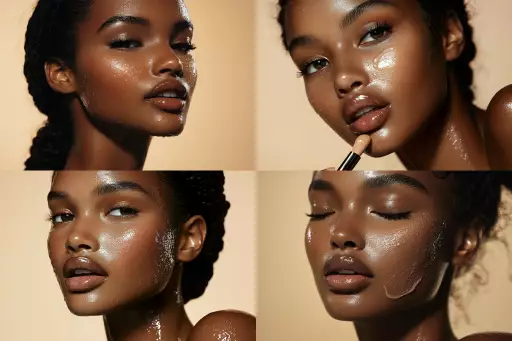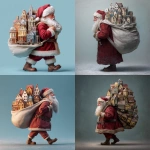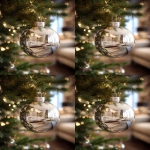Explore the Best AI Image Gallery

Pixelated Dreams: Exploring the Impact of AI-Generated Images in Art
The art world is undergoing a seismic shift, fueled by the rise of artificial intelligence (AI) and its ability to generate breathtakingly realistic images. This technology, once confined to science fiction, is now a tangible reality, blurring the lines between human creativity and machine ingenuity. But what does this mean for artists, the art market, and the very definition of art itself?
A New Creative Frontier
AI-generated images are created using complex algorithms trained on vast datasets of existing artwork. These algorithms learn the patterns, styles, and techniques used by human artists, enabling them to produce original pieces that often mimic the aesthetics of renowned masters or explore entirely novel visual concepts.
One of the most captivating aspects of this technology is its accessibility. Tools like DALL-E 2, Midjourney, and Stable Diffusion empower individuals with little to no artistic experience to create stunning visuals simply by inputting text descriptions—a concept known as text-to-image generation. This democratization of art creation opens up exciting possibilities for self-expression and experimentation.
Potential Applications: From Fine Art to Functional Design
The applications of AI-generated images extend far beyond the realm of fine art.
- Design and Illustration: Imagine creating personalized logos, website graphics, or book covers with a few clicks.
- Advertising and Marketing: Generate captivating visuals for campaigns, product mockups, or social media content.
- Education and Research: Visualize complex data, create interactive learning materials, or explore historical artifacts in immersive ways.
- Entertainment and Gaming: Develop stunning game environments, character designs, or cinematic sequences.
Ethical Considerations: Navigating Uncharted Territory
While the potential of AI-generated images is undeniable, it also raises a number of ethical concerns that require careful consideration:
- Copyright and Ownership: Who owns the copyright to an image created by an AI? The programmer, the user who provides the input, or the AI itself?
- Bias and Representation: AI algorithms are trained on existing data, which may contain biases that reflect societal prejudices. This can result in AI-generated images that perpetuate stereotypes or exclude certain groups.
- Job Displacement: Will AI-generated images replace the need for human artists?
- Authenticity and Deception: The ability to create hyperrealistic images raises concerns about the potential for misuse, such as creating deepfakes or spreading misinformation.
The Future of Art: A Collaborative Landscape?
The integration of AI into the art world is still in its early stages, but it has the potential to profoundly reshape how we create, experience, and interact with art. Its likely that the future will see a collaborative landscape where human artists and AI tools work together to push the boundaries of creativity.
AI can act as a powerful assistant, helping artists overcome technical challenges, explore new ideas, or generate variations on their original concepts. Ultimately, the key is to embrace this technology responsibly, address its ethical implications thoughtfully, and harness its potential to enrich the artistic experience for all.

](https://images.ai-img.art/thumbnails/150/ff1c1d43f82864cd0e6eccac98f4af6deac26562f29153c1095bc00f80aed2fb.webp)

](https://images.ai-img.art/thumbnails/150/40e314c6a980265d2e43145d817df6c2de78540fb3b449d319fc47a9a75c65c8.webp)



](https://images.ai-img.art/thumbnails/150/988aa4a69efdeabd6f571e6e831eaa6f7fc403f6e453e13ed65f17e4d0c5988c.webp)



](https://images.ai-img.art/thumbnails/150/0ff66bef3cc88ad00980f6e2b342269a09f1be3416b609f6f23a05760c4b9881.webp)

](https://images.ai-img.art/thumbnails/150/7f05f32f5d38a8de9381d910b6caed58e573752cc3336fe2fddcd3284241da08.webp)







](https://images.ai-img.art/thumbnails/150/b9ffe95c383ec1a8522d40a1e2bcf7757314e46ecb4cff50f1c42291cb0dd9f8.webp)
](https://images.ai-img.art/thumbnails/150/82bc4d917a5f041064f741293d55081e3e7ff555944bcbfc6dc1f2f27fd37f45.webp)
